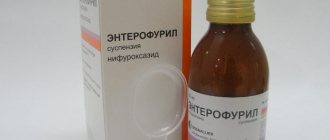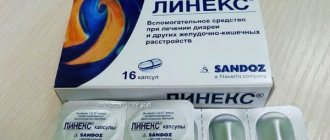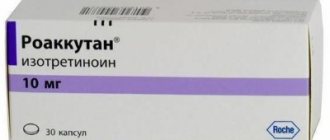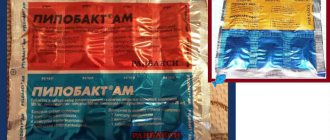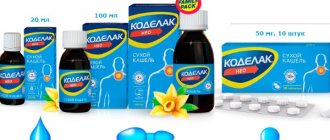Azithromycin for children is an antibacterial agent used to combat infectious and inflammatory pathologies that affect the respiratory, genitourinary and other body systems. Timely prescribed medication allows you to quickly get rid of the disease. This antibacterial drug differs from other similar drugs in its low level of toxicity, as well as its long exposure time, due to which it should be used no more than once a day.
Chemical composition and trade names of the drug
Azithromycin is a domestic antibiotic, a derivative of erythromycin and belongs to the 3rd generation of bactericidal medications. The main element is azithromycin monohydrate.
Depending on the form of release of the drug, additional components are added to it:
- sucrose, refined or in powder form;
- anhydrous trisodium phosphate;
- colloidal silicon dioxide (anhydrous);
- calcium hydrogen phosphate;
- corn starch;
- gelatin;
- magnesium stearate;
- sugar substitute E951;
- flavorings (mint, strawberry, apple);
- stabilizers (E415, E463, E171).
The drug is called the main component, and this substance is also an active component of analogues of the drug, these include:
- Azivok.
- Azimicin.
- AzitRus.
- Zitrolide.
- Zimaks.
- ZI factor.
- Sweetrox.
- Sumamed.
- Sumasid.
- Chemomycin.
The listed drugs belong to the general azithromycin group and are easily interchangeable with each other.
When choosing, you need to pay attention to the components, as they can cause an allergic reaction.
Composition of the drug
Azithromycin contains a substance of the same name. Some other drugs also contain azithromycin; drug analogues are presented below:
- Azimicin;
- Sumamed;
- Chemomycin;
- Azitrox;
- Azitral;
- Ecomed.
The medicine also contains excipients such as sucrose, dyes, silicon dioxide, gelatin, magnesium stearate. Therefore, when treating a child with a tendency to allergic reactions with Azithromycin, this circumstance must be taken into account.
Release form
Azithromycin is sold in pharmacies in a variety of forms, so it can be selected based on the age and condition of the child.
Types of drug release:
| Dosage form | Characteristic | Amount of active substance (mg) in 1st dose |
| Pills | In a shell or for resorption. | 125 250 500 1000 |
| Powder | Yellow-cream colored granules. Sold in bottles. To use, you must add the required amount of water. A measuring syringe or spoon is included with the powder. The suspension has a sweet taste and pleasant aroma. | 100 200 |
| Capsules | One half of the capsule is orange, the other is white. Inside is a gelatinous mass with an active substance. | 250 500 |
| Lyophilisate | Frozen powder for injection. | 500 |
Injections are used to treat seriously ill patients. Lyophilisate is not used in children. The pediatrician selects the appropriate form of antibiotic, prescribes a single dose and course of treatment. Independently increasing or decreasing the amount of the drug will not give the desired effect of treatment.
Operating principle
Azithromycin for children (the instructions for use contain information about the effect of the drug on the body) is characterized by the speed of treatment of infection, which shortens the recovery time. After consuming the product, the maximum amount of the active substance is observed after 120-180 minutes.
Complete elimination occurs 6 days after administration (excreted in feces and 5% in urine). The last dose of the drug remains in the body for another 6-7 days. And all this time the therapeutic effect of the drug remains. Therefore, for treatment it is enough to take a single dose of the drug per day and a course of treatment of 3-5 days.
The acidic environment of the stomach does not affect the effectiveness of the drug, but food may slow down the effect. Azithromycin is localized in the site of inflammation (tissues, lungs, skin), the concentration of the drug in the blood is minimal. Therefore, the antibiotic does not cause severe harm to the body, but only acts on the infection.
Due to its direct effect, the product is highly effective. The active element does not allow bacteria to multiply and grow, and also disrupts their viability. The antibiotic has no effect on fungi and viruses.
Reviews about the use of azithromycin 250
Now let's take a look at the reviews from parents taken from user correspondence from well-known forums.
Nastya
My daughter (14 years old) is constantly sick with ARVI, and, unfortunately, very often the disease is complicated by tracheitis or bronchitis, and the complication after the virus occurs quickly. Recently I got very sick. The pediatrician prescribed Augmentin, ACC, Erespal in syrup. There was practically no result, the wheezing went lower. When my daughter coughed, it was clear to me, not even the doctor, that her breathing was weakened, and the cough seemed to be coming from within.
The antibiotic was replaced with azithromycin 250. After the first tablet, the temperature returned to normal. And three days later the child was healthy. Just three tablets and these are the results. The product deserves high praise, and I give it. Valentina
I would like to share a review about taking azithromycin 250 in a 12-year-old child. My son fell ill with lacunar tonsillitis with all the symptoms indicated in medical textbooks. The pediatrician prescribed amoxiclav (orally), gargling with chlorophyllipt, Gevalex, and decasan. The effect is zero. In the morning I looked into my throat and felt a fever. The tonsils were completely white, like white mulberries. Body temperature reached 39 degrees.
Indications for use
Azithromycin is prescribed for infectious diseases caused by bacteria that are sensitive to the main component.
The drug is used in the treatment of:
- ENT diseases (sinusitis, otitis, tonsillitis).
Azithromycin for children helps to cope with ENT diseases. - Inflammatory processes in the lungs (bronchitis, pneumonia).
- Infections in the digestive tract (stomach and intestinal ulcers).
- Skin lesions due to bacteria (impetigo, erysipelas, acne).
- Diseases of the genitourinary system (urethritis, cervicitis).
A pediatrician may prescribe an antibiotic if complications develop after a cold, if penicillin drugs are powerless against infection. The drug is used in complex therapy. It is often prescribed in general treatment for complications from viral diseases, to avoid the addition of a bacterial infection.
Pharmacological effect
Azithromycin belongs to the group of antibacterial drugs - macrolides. Its pharmacological effect is the ability to slow down and stop the growth of bacterial microorganisms. As a result, the death of pathogenic microflora is observed. Bacteria such as staphylococci, Haemophilus influenzae, streptococci, the causative agent of Lyme disease, gonococci, chlamydia, mycoplasma, clostridia and others are sensitive to Azithromycin. Some microorganisms may develop resistance to the antibiotic in question. These can be the following types of bacteria:
- Bacteroides fragilis.
- Staphylococci.
- Streptococci.
- Fecal enterococci.
In addition, Azithromycin may also be ineffective during the treatment of diseases caused by microorganisms resistant to other types of macrolides, including Erythromycin.
To achieve the maximum therapeutic effect, before prescribing the drug, the doctor must refer the patient for a laboratory blood test, which will help to find out which pathogen provoked the disease in a particular case.
Contraindications
Azithromycin for children (the instructions for use contain a section on contraindications, which must be read) is not always approved for use. The drug is not prescribed for children under 6 months of age.
And also it cannot be used for diseases:
- severe pathologies of the liver and kidneys. If the functioning of the organs is slightly impaired, then the dosage is calculated by the pediatrician;
- intolerance to the elements included in the drug;
- diseases of the cardiovascular system accompanied by arrhythmia;
- diabetes mellitus and other endocrine diseases.
When a drug is contraindicated for a child, an analogue is selected by the pediatrician. Independent replacement of the drug is prohibited.
Side effects
When using the drug, a child may experience side effects, which are listed below in descending order, according to the likelihood of their occurrence.
Scroll:
- Impaired functioning of the digestive tract (diarrhea, abdominal pain, nausea).
- Headaches with dizziness.
- Deterioration in the performance of the organs of hearing and vision (tinnitus, conjunctivitis).
- Skin rashes accompanied by itching.
- Deterioration of sleep.
- Increased heart rate and chest pain.
- Decreased functioning of the liver and kidneys, with the likelihood of developing pathologies.
- Changes in blood composition.
- Stomatitis and candidiasis due to changes in microflora.
- Inappropriate behavior.
If the listed symptoms are clearly manifested, it is recommended to select an analogue of azithromycin. Abnormal stools, flatulence and abdominal pain are present when taking any antibiotic, so this symptom is not a reason to change the medication.
Side effects
Side effects, information about how they are directed lower, are classified according to organs and systems and according to frequency: very often (≥1/10); often (≥1/100 to <1/10); uncommon (≥1/1000 to <1/100); rarely (≥1/10000 to <1/1000), very rarely (<1/10000); invisible (cannot be determined from apparent data).
Infections and invasions:
uncommon – candidiasis, oral candidiasis, urinary infections, pneumonia, fungal infection, bacterial infection, pharyngitis, gastroenteritis, impaired respiratory function, rhinitis; unknown – pseudomembranous colitis.
On the side of the blood and lymphatic systems:
uncommon – leukopenia, neutropenia, eosinophilia; unknown – thrombocytopenia, hemolytic anemia.
On the side of the immune system:
infrequently – angioedema, hypersensitivity reactions; unknown - anaphylactic reaction.
On the side I will exchange speeches:
infrequently – anorexia.
On the side of the psyche:
infrequently – nervousness, sleeplessness; rarely – agitation; unknown – aggressiveness, restlessness, delirium, hallucinations.
On the side of the nervous system:
often – headache; uncommon – confusion, drowsiness, paresthesia, dysgeusia; unknown – restlessness, suedia, psychomotor activity, anosmia, parosmia, ageusia, myasthenia gravis, hypoesthesia.
From the side of the organs:
infrequently - great discord.
On the side of the hearing organs:
infrequently – hearing impairment, vertigo; invisible - loss of hearing, including deafness and/or ringing in the ears.
On the side of the heart:
infrequently - palpitation;
unknown – torsade de pointes,
arrhythmia, including tachycardia, prolonged QT interval on ECG.
From the side of the vessel:
infrequently - flush; unknown – arterial hypertension.
On the side of the respiratory system:
infrequently – dyspnea, nosebleeds.
On the side of the grass tract:
very often – diarrhea; often - vomiting, abdominal pain, boredom; uncommon – gastritis, constipation, flatulence, dyspepsia, dysphagia, dry mouth, irritation, mouth ulcers, mucus hypersecretion; unknown - pancreatitis, change in tongue color.
On the side of the hepatobiliary system:
rarely – impaired liver function, cholestatic hepatitis; unknown - liver failure (which rarely led to a fatal outcome), fulminant hepatitis, necrotic hepatitis.
From the side of the skin and under the skin:
infrequently - sagging, itching, kropivyanka, dermatitis, dry skin, hyperhidrosis; rarely – photosensitiveness, acute generalization, exanthematous pustulosis; unknown – Stevens-Johnson syndrome, toxic epidermal necrolysis, polymorphic erythema, reaction to drug exposure with eosinophilia and systemic symptoms.
On the side of the skeletal-meat system:
uncommon – osteoarthritis, myalgia, back pain, neck pain; unknown – arthralgia.
On the side of the thyroid system:
infrequently – dysuria, pain in depression; unknown – hypothyroidism deficiency, interstitial nephritis.
On the side of the reproductive system and milk vines:
infrequently - uterine bleeding, testicular damage.
Secular disturbances and local reactions:
infrequently - pain in the breasts, swelling, weakness, asthenia, voma, breast swelling, hyperthermia, pain, peripheral swelling.
Laboratory displays:
often – decreased number of lymphocytes, increased number of eosinophils, decreased level of blood bicarbonate, decreased level of basophils, decreased level of monocytes, increased level of blood neutrophil response; infrequently – increased levels of aspartate aminotransferase, increased levels of alanine aminotransferase, increased levels of bilirubin in the blood, increased levels of protein in the blood, increased levels of creatinine in the blood, changes in potassium levels in the blood, increase in the level of potassium phosphatase, increase in the level of chloride, increase in the level of glucose, increase in the level of platelets , decreased hematocrit level, increased bicarbonate level, increased sodium level.
Depression and disappointment:
infrequently – complications after the procedure.
Information about adverse reactions that may be associated with Mycobacterium Avium Complex prophylaxis and treatment. These unusual reactions vary by type or frequency from those that occur when frozen liquid dosage forms and dosage forms of trivalent drug:
On the side I will exchange speeches:
often – anorexia.
On the side of the psyche:
often - confusion, headache, paresthesia, dysgeusia; infrequently – hypoesthesia.
From the side of the organs:
often - blindness.
On the side of the hearing organs:
often – deafness; infrequently – loss of hearing, ringing in the ears.
On the side of the heart:
infrequently - palpitation.
On the side of the herbal tract: very often - diarrhea, abdominal pain, boredom, flatulence, gut-intestinal discomfort, rare emptiness.
On the side of the hepatobiliary system:
infrequently - hepatitis.
From the side of the skin and under the skin:
often - vysipannya, sverbіzh; uncommon – Stevens-Johnson syndrome, photosensitiveness.
On the side of the skeletal-meat system:
often - arthralgia.
Secular disturbances and local reactions:
often - increased fatigue; infrequently – asthenia, weakness.
Instructions for use
Azithromycin for children should be given to a child based not only on the instructions for use. The pediatrician selects the dosage and course according to the severity and type of disease, and also takes into account the child’s weight and medications used together. Usually 1 single dose is taken per day, the duration of treatment is from 3 to 5 days.
The drug can be given 1 hour before a meal or 2 hours after a meal, but not on an empty stomach.
Otherwise, the absorption of azithromycin will take longer. The medicine taken must be washed down with warm water. Moreover, if a suspension is given to a child, it is recommended to dilute the powder in boiled water at room temperature. The prepared solution must be shaken before each use.
If you accidentally miss a medicine, it must be taken immediately, and the next portion of the medicine should be taken after 24 hours. When taking capsules and tablets, for better effectiveness of the drug, it is not recommended to chew or bite them.
Pharmacotherapeutic group
Antibacterial properties for systemic congestion. Macrolides, lincosamides and streptograms. Azithromycin. ATX code J01F A10.
Pharmacological power.
Pharmacodynamics. Azithromycin is a macrolide antibiotic that belongs to the azalide group. The molecule is stabilized as a result of the introduction of a nitrogen atom in the lactone ring of erythromycin A. The mechanism of action of azithromycin lies in the inhibition of bacterial protein synthesis by binding to the 50 S-subunit of ribosomes and inhibiting trans peptide locations.
Mechanism of resistance. Fully cross-resistance occurs among Streptococcus pneumoniae, β-hemolytic streptococcus group A, Enterococcus faecalis and Staphylococcus aureus, including methicillin-resistant Staphylococcus aureus (MRSA), to erythromycin, azithromycin, and other macrolides and lincosamides.
The extent of established resistance may vary depending on the locality and time of species observed, so local information about resistance is necessary, especially when treating severe infections. In times, it is possible to atrocity for the quilted pleasantly pleasing, Yakshcho Mastsev’s stimulation of the resistance of the drug with the likovanni senimal type of type il il є summary.
Antimicrobial spectrum of azithromycin
Call for sensitive views
Aerobic gram-positive bacteria: Staphylococcus aureus
methicillin-sensitive,
Streptococcus pneumoniae
penicillin-sensitive,
Streptococcus pyogenes.
Aerobic gram-negative bacteria: Haemophilus influenzae, Haemophilus parainfluenzae, Legionella pneumophila, Moraxella catarrhalis, Pasteurella multocida.
Anaerobic bacteria: Clostridium perfringens, Fusobacterium spp., Prevotella spp., Porphyriomonas spp.
Other microorganisms: Chlamydia trachomatis, Chlamydia pneumoniae, Mycoplasma pneumoniae.
You see, for some people resistance can be a problem
Aerobic gram-positive bacteria: Streptococcus pneumoniae
with intermediate sensitivity to penicillin and penicillin-resistant.
Gene-resistant organisms
Aerobic gram-positive bacteria: Enterococcus faecalis,
staphylococci MRSA, MRSE*.
Anaerobic bacteria:
group of bacteroids
Bacteroides fragilis.
*
Methicillin-resistant Staphylococcus aureus has a very high level of resistance to macrolides and may be indicated through rare sensitivity to azithromycin.
Pharmacokinetics. Bioavailability after oral administration is approximately 37%. The maximum concentration (Cmax) in blood serum is reached 2–3 years after administration.
When taken internally, azithromycin is distributed throughout the body. It appears that the concentration of azithromycin in tissues is significantly higher (50 times), lower in blood plasma, which indicates that the drug is strongly bound to tissues.
Binding to blood serum proteins varies steadily with plasma concentrations and ranges from 12% at 0.5 mcg/ml to 52% at 0.05 mcg/ml in blood serum. The volume of distribution in the equal body (VVss) became 31.1 l/kg.
The end period of plasma infusion generally reflects the infusion period (T½) of tissue lasting 2–4 days.
Approximately 12% of the internal dose of azithromycin appears unchanged over the next 3 days. Particularly high concentrations of the unchanged azithromycin were detected in female subjects. Also, 10 metabolites were identified in the female animal, which were created with the help of N- and O-demethylation, hydroxylation of the deosamine ring and aglycone and cleavage of the cladinose conjugate. A comparison of the results of single chromatography and microbiological analyzes showed that the metabolites of azithromycin are not microbiologically active.
Tablet dosage
Tablets are produced with different contents of the active substance, for ease of use. The pediatrician calculates a single dose, taking 10 mg of the drug per 1 kg of weight. Based on the result obtained, tablets of 125,250,500 or 1000 mg of active substance content are prescribed.
Depending on the disease, the child may be prescribed the following medication:
- Colds or pathologies of the ENT organs. A single dosage is taken once a day for 3 days.
- Skin diseases. On the 1st day the 2nd dose is given, in the next 4 days the 1st dose is given. The course will be 5 days.
- Inflammatory processes of the genitourinary system. The child is given the 2nd dose 1 time. The course of treatment is 1 day.
- For diseases caused by a tick bite, treatment similar to skin diseases is used.
- When treating ulcers caused by infection, the child is given a 2nd dose over 3 days.
When a child is prescribed a single dosage of 500 mg, parents can give a 500 mg tablet or 2 250 mg tablets. But it is not recommended to divide the 1000 mg tablet. It is prescribed similarly at a dosage of 250 mg.
If side effects occur, the dosage of the medication should not be reduced. Then the treatment will not bring results and will harm the child’s health. The pediatrician selects antibiotics with a similar effect, and azithromycin is discontinued.
Directions for use: special instructions
Before taking Azithromycin for children, you should carefully study the instructions that come with the drug. It is very important that antibacterial therapy is not a person’s independent choice. Only a doctor who has examined the patient and made a diagnosis indicating the presence of a bacterial infection in the body can make a decision about the possibility of treating a disease with antibiotics.
Azithromycin for children has some application features:
- tablets should be taken either an hour before meals or an hour after it;
- Take the tablets with water;
- To dilute the powder, you need to boil the required amount of water in advance, cool it, then add it to the bottle with the powder in two steps, shaking it periodically until the contents are completely dissolved;
- the suspension is prepared before the first use of the drug, then stored on the refrigerator shelf (before each subsequent use, it must be shaken thoroughly so that the sediment disappears);
- required dose of suspension
- as a rule, the drug is taken once a day;
- the course of therapy can last from three to five days and is determined by the doctor, according to the individual characteristics of the patient and his disease;
- if you unintentionally miss the next dose of the drug, you should take the drug as soon as this fact becomes obvious (you should take the next tablet no earlier than 24 hours from the moment you took the previous dose);
- You should not bite, crush tablets or open capsules before use. Although this action will not cause harm, the effect of the antibiotic may be reduced.
Suspension dosage 125 mg, 250 mg, 500 mg
Azithromycin for children (instructions for use of the suspension contain information on the preparation of solutions of different concentrations of the active substance) for children under 3 years of age is recommended to be used in powder form. The convenience of this form is that the drug can be dosed accurately and is easier for the child to use.
To do this, use a measuring spoon or syringe. To wash off the remaining drug from the mouth, the child should be given a little water or juice after the suspension.
From the powder you can prepare 2 types of solutions containing 100 or 200 mg of active substance. When preparing, add the required amount of water to the bottle (the volume is indicated in the instructions and is also marked with a line on the bottle). It should be taken into account that when calculating the dosage, it is now taken not 10 mg, but 0.5 ml per 1 kg of the child’s weight.
The prepared suspension is stored in the refrigerator for no more than 5 days. Then the drug is considered unsuitable for treatment. When treating with a suspension the main diseases considered for the tablet form, the single dosage remains the same.
It is important that the child swallows the product completely and does not spit or regurgitate it. If this happens, then it is necessary to give the child the antibiotic again. If regurgitation or spitting resumes, the drug is not given again. It is necessary to contact your pediatrician and replace the product with an analogue.
At what age is it allowed to take
- Some instructions for the use of Azithromycin suspension for children indicate that it can be prescribed from six months of age, others - from one year of age, and still others limit the indications for the drug by weight (at least 15 kg). But I know for sure that my pediatric colleagues prescribe medicine to patients even younger than 6 months. Therefore, you should rely on the qualifications of your attending physician, who will assess the extent to which the drug is necessary for your child.
- According to the same instructions for use, Azithromycin for children in tablets with 125 mg of antibiotic is approved from the age of 3, and capsules with this dosage - from the age of 6.
- Tablets and capsules with 250 mg and 500 mg of Azithromycin are prescribed from the age of 12 with a weight of 45 kg.
Overdose
In case of accidental overdose of the drug, urgent gastric lavage is necessary, the child is given activated charcoal or polysorb. If the poisoning is not severe, then these procedures are sufficient. In case of a large overdose, it is necessary to call emergency help.
As a result of an increased dose of the drug, the child may experience temporary deafness. At the same time, diarrhea and nausea with vomit may be present. A malfunction in the digestive tract can lead to dehydration, so it is necessary to give the child more liquid, and, if necessary, saline solution.
Actions in case of antibiotic overdose or poisoning
Intoxication symptoms that accompany exceeding the recommended dosage of the medication may vary. They depend on the group to which the drug belongs and the effect it has.
Toxic reactions can develop due to the fact that severe infectious diseases are treated with antibacterial agents. In this case, the patient uses high doses of the drug, which leads to the rapid death of pathogens and their active release of decay products (toxins). These substances begin to penetrate the bloodstream, for this reason the normal functioning of the organs and systems of the body is disrupted, and the course of existing chronic pathologies worsens.
Intoxication resulting from taking antibacterial agents can provoke the following symptoms:
- increase in thermometer readings;
- the appearance of headache;
- severe joint and muscle pain;
- migraine;
- disturbances in stool, the appearance of mucus and blood in it;
- changes in blood pressure;
- increased heart rate;
- increased sweating;
- confusion.
Changes in skin color and loss of consciousness are an undoubted reason to quickly call an ambulance.
In order to quickly relieve the symptoms of an overdose and stop the harmful effects of the drug on the human body, the following measures should be taken even before the arrival of medical teams.
- Rinse the stomach by drinking large amounts of water and inducing vomiting (the method is only suitable for cases when the person is conscious).
- Take sorbents of any kind (Polysorb, Atoxyl, activated carbon).
- Drink a lot, preferring jelly, water with added starch, milk. These drinks will coat the gastric mucosa, preventing dangerous substances from entering the blood.
- Take laxatives.
Medical care during a drug overdose may include the following procedures:
- forced diuresis, with the introduction of a large amount of fluid into the human body and the subsequent use of diuretics;
- a number of heart diseases do not allow the use of intravenous fluids and other drugs;
- when renal failure is fixed, the previous method is prohibited for use;
- doctors can perform plasmapheresis, hemodialysis, hemosorption, peritoneal dialysis;
- if necessary, symptomatic therapy is provided to alleviate the patient’s condition and maintain the functioning of all internal organs.
Only a qualified specialist can prescribe drugs to treat overdose and perform procedures. Self-treatment of overdose syndrome is strictly prohibited.
Interaction with other drugs
Antibiotics are often prescribed together with other drugs. Therefore, azithromycin can be prescribed by a pediatrician only if it does not increase the side effects of medications and does not reduce their effectiveness.
Medicines that should not be taken together:
- Co-administration of drugs that alter gastric acidity reduces the absorption of the antibiotic. This reduces its effectiveness. When taking these medications, it is recommended to wait 2 hours before taking the antibiotic.
- Simultaneous use of 2 or more types of antibiotics is not recommended. This increases the side effects of the drugs.
- At the same time, it is prohibited to take azithromycin with blood thinning drugs.
- Vasodilators may increase the chance of side effects.
- An antibiotic should not be used when combined with alcohol-based infusions. Such children are rarely prescribed, but in some cases the therapy is used.
- With the simultaneous use of azithromycin and immunosuppressants (used in organ transplantation), the effect of the second drug is enhanced, which can greatly harm the body.
- The combined use of antifungal agents reduces the effectiveness of the antibiotic.
If the disease has just been discovered and no other drugs have been taken, it is also important to prescribe azithromycin. Then other drugs are selected in combination with an antibiotic.
When treatment has already begun, and an antibiotic is required to eliminate complications after the disease, then it is necessary to inform the pediatrician about taking all medications, even if they stopped taking them 1-2 days ago. Not all medications are immediately eliminated from the body.
Features of good stagnation
Allergic reactions.
As with erythromycin and other macrolide antibiotics, rare serious allergic reactions have been reported, including angioedema and anaphylaxis (in some cases, fatal inheritance), dermatological reactions, including acute generalized exanthematous pustulosis. All of these reactions caused by azithromycin resulted in recurrent symptoms and required extreme caution and treatment.
Impaired liver function. Liver debris is the main route of elimination of azithromycin, so azithromycin should be administered cautiously to patients with severe liver disease. We were told about episodes of fulminant hepatitis, which causes life-threatening impairment of liver function when taking azithromycin. It is possible that some patients have a history of liver disease or other hepatotoxic drugs.
It is necessary to carry out tests/tests of liver function when signs and symptoms of liver dysfunction develop, for example, asthenia, which quickly develops and is accompanied by redness, dark spots, swelling and bleeding of the liver. cancer encephalopathy.
In case of impaired liver function, azithromycin should be taken.
Rizhki. In patients who take active drugs, immediate administration of certain macrolide antibiotics causes a rapid development of ergotism. Daily data on the possibility of interaction between drugs and azithromycin. Prote through the theoretical possibility of ergotism, azithromycin should not be prescribed immediately with similar symptoms.
Superinfections. As with other antibiotics, it is recommended to exercise caution for signs of superinfection caused by insensitive organisms, including fungi.
Clostridium difficile-associated diarrhea (CDAD) has been reported with all antibacterial drugs, including azithromycin, with severity ranging from mild diarrhea to fatal colitis. Treatment with antibacterial drugs alters the normal flora of the intestine, allowing Clostridium difficile to grow to extreme levels.
Clostridium difficile produces toxins A and B, which inhibit the development of CDAD. Clostridium difficile strains that overproduce toxins and cause increased morbidity and mortality, and some infections may be resistant to antimicrobial therapy and require colectomy . It is necessary to consider the possibility of developing CDAD in all patients with diarrhea caused by antibiotic ingestion. A careful history of illness is required, as it has been reported that CDAD may continue for 2 months after taking antibacterial drugs.
Damage to the function of the nirok. Patients with severe neurodysfunction (glomerular filtration rate <10 ml/h) experienced a 33% increase in systemic exposure to azithromycin.
Increased cardiac repolarization and QT interval, which promoted the risk of developing cardiac arrhythmia and torsade de pointes, were guarded against when treated with other macrolide antimicrobial agents. biotics, including azithromycin. Fractures of the heart, which are accompanied by an advanced risk of ventricular arrhythmias (including torsade de pointes), can lead to cardiac arrest; azithromycin should be used with caution in patients with severe proarrhythmic arrhythmias (especially or for women and patients of the summer age), for patients:
- with congenital or registered prolongation of the QT interval;
- What drugs are being treated in the presence of other active drugs that are likely to affect the QT interval, for example, antiarrhythmic drugs of classes IA (quinidine and procainamide) and III (dofetilide, amiodarone) and sotalol), cisapride and terfenadine, antipsychotic agents such as pimozide ; antidepressants, such as citalopram, and fluoroquinolones, such as moxifloxacin and levofloxacin;
- with disturbances in electrolyte metabolism, especially in cases of hypokalemia and hypomagnesia;
- with clinically relevant bradycardia, cardiac arrhythmia or severe cardiac failure.
Myasthenia gravis. They were informed about the worsening symptoms of myasthenia gravis or about a new development of myasthenic syndrome in patients who were discontinuing azithromycin therapy.
Streptococcal infections. Azithromycin is effective against treated streptococcal infections of the oropharynx; however, in the prevention of rheumatic fever, there is a lot of data demonstrating the effectiveness of azithromycin.
Otherwise. The safety and effectiveness for the prevention or treatment of Mycobacterium Avium Complex in children have not been established.
The drug contains methylparaben (E 218) and propylparaben (E 216), which may cause allergic reactions (possibly enhanced).
Suspension during pregnancy or breastfeeding.
Vaginism. There is no adequate data on the administration of azithromycin to vaginal women. In studies of reproductive toxicity in animals, teratogenic influx of azithromycin into the fetus has not been identified, but the drug has penetrated the placenta. The safety of azithromycin administration during pregnancy has not been confirmed. Therefore, azithromycin can be prescribed during pregnancy, only if the measles outweighs the risk.
Goddamn breastfeeding. It has been reported that azithromycin is excreted in human breast milk, but no well-controlled clinical studies that could characterize the pharmacokinetics of azithromycin excretion in human breast milk have been conducted. The use of azithromycin during breastfeeding may be less likely in cases of seizures, if the measles for the mother outweighs the potential risk for the child.
Fertility. Fertility studies were carried out using squints; The indicator of vaginosis decreased after administration of azithromycin. The relevance of this data is completely unknown to people.
This is due to the fluidity of the reaction during treatment with vehicles or other mechanisms.
Evidence that azithromycin can reduce the risk of adverse reactions such as dizziness, drowsiness, etc. destruction of the dawn.
Terms of sale and storage
Azithromycin in any form can be purchased at a pharmacy only with a pediatrician's prescription with the specified dosage and course of administration. When purchasing, you need to pay attention to the expiration date. Depending on the type of medicine and the manufacturer, the expiration date may vary.
On average, drugs are stored for 2-3 years. Suspensions after opening or preparation are suitable for 5 days.
Medicines should be stored away from the child in a dark and cool place (temperature no higher than 25 degrees). If the conditions are not met, the shelf life of the drug is reduced. It is advisable not to use this remedy for treatment.
What to replace
It is not worth choosing a drug for treatment on your own, since each has its own side effects, and not all of them are combined with each other. To avoid negative consequences, a doctor should prescribe treatment, especially if it is a child.
In addition to Azithromycin, the main active ingredient of which has the same name, there are other similar drugs. Azithromycin, as the main active ingredient, is found in Azimycin, Azitrox, Sumamed, Hemomycin, Ecomed, Zitrocin and others.
The presented products are considered interchangeable, therefore, if Azithromycin is not available, you can take one of them. But before taking the pills, it is worth checking the dosage of the drug.
Despite the fact that one component is similar, it is also worth paying attention to the auxiliary components, which are sucrose with lactose, xanthan gum with titanium dioxide, flavoring and coloring, as well as others.
How to gargle with Iodinol - preparing the solution and rinsing procedure
Analogs
Azithromycin for children (the instructions for use discussed above apply only to this drug) has a large number of analogues that are similar in action, but have different compositions (according to additional components), contraindications and side effects.
If necessary, azithromycin can be replaced with the following drugs:
- Azivok . Sold in the form of gelatin capsules. Approved for treatment for children over 12 years of age and weighing more than 45 kg. The medicine is contraindicated in case of impaired functioning of the liver, kidneys and lactose deficiency.
- Azimicin . Prescribed in tablets and solutions for droppers. Approved for use after 12 years and weighing more than 45 kg. Side effects and contraindications are similar to azithromycin.
- AzitRus . This is a powder for preparing a suspension (from 6 months), capsules (from 3 years) and tablets (from 12 years). When taken, there is a disturbance in the functioning of the digestive tract and cardiovascular system. Should not be taken with food.
- Vilprafen. You can buy it in the form of coated and lozenge tablets (with strawberry flavor and aroma). Used for treatment after 14 years of age. Ingestion may cause disruption of the digestive tract, itching and hearing impairment. In case of poor functioning of the liver and kidneys, the drug is taken under the supervision of a pediatrician.
- Zitrolide . These are capsules (yellow-white) and solution for injection. Use is permitted from 12 years of age. Taking it may cause blood disorders, changes in behavior and breathing problems. For liver and kidney pathologies, use is prohibited.
- Zimaks . Sold in a variety of forms: tablets, capsules (from 2 years) and suspensions (from 6 months). During treatment, a single dosage can be divided into 3 doses at the same time interval. The medicine affects the functioning of the liver and kidneys, and can cause visual and hearing impairment.
- ZI factor . Capsules and tablets are approved for use from the 1st year. The drug affects the functioning of the kidneys, liver and heart. It also disrupts the functioning of the digestive tract (flatulence, diarrhea, abdominal pain)
- Clarithromycin . These are tablets that are approved for use after 12 years of age. The medicine can cause disruption in the gastrointestinal tract, cardiovascular and nervous systems.
- Macropen . You can buy it in the form of powder or tablets, which are approved for use from 6 months. The course of treatment can last up to 14 days. Use may cause rash and nausea. If liver and kidney function are impaired, take with caution.
- Rovamycin . Tablets are approved for treatment after 6 years. When taken, the digestive tract may be disrupted. For liver pathologies, take under the supervision of a pediatrician.
- Roxithromycin . These are tablets that are prescribed after 12 years of age. The drug can cause disruption in the digestive tract, dizziness and an allergic reaction. For pathologies of the kidneys and liver, there are restrictions on intake.
- Sweetrox . Powder for suspensions can be given to children after 6 months. Ingestion may cause vomiting, diarrhea, and headache. For liver and kidney diseases, pediatrician supervision is required.
- Sumamed . The suspension is allowed from 6 months, tablets from 3 years. The drug can cause dysbiosis, headaches and cardiac dysfunction. For pathologies of the kidneys and liver, taking the drug is not recommended.
- Sumasid . Can be purchased in the form of tablets, capsules and powder for suspension. Age restrictions are similar to those of azithromycin. The medicine may cause diarrhea, vomiting and itching.
- Chemomycin . These are capsules, tablets (from 12 years old) and suspensions (from 6 months). The drug can cause dysbacteriosis, urticaria and dizziness.
- Erythromycin . The drug is rarely prescribed before 12 months, as it has many side effects. Available in syrups, suspensions, tablets. For small children, you can buy medicine in the form of suppositories.
These drugs can be prescribed by a pediatrician if the side effect is not caused by the main component. Otherwise, another type of antibiotic is needed.
What to choose Suprax or Azithromycin?
Suprax contains cefixime, which is a cephalosporin, as its main component. For children over 6 months of age, the medicine is available in granules from which a suspension is prepared for oral administration. It is contraindicated if you are allergic to its composition; it should be taken with caution if you have had pseudomembranous colitis or chronic kidney dysfunction. Unlike Azithromycin, Suprax is less likely to cause unwanted reactions, but this does not mean that it is better. These antibacterial agents have different spectrums of action. Only a doctor can tell which drug is better after determining the sensitivity of the pathogen to the antibiotic, whether the child has restrictions on starting therapy and its tolerability.
Price in pharmacies in Moscow, St. Petersburg, regions
The cost of azithromycin varies depending on the form of the drug and the amount of active substance in it. And also the price varies from manufacturer to manufacturer.
Average prices for drugs (in rubles):
| Regions | Pills | Capsules | Powder |
| Moscow | 40-320 | 120 | 200 |
| St. Petersburg | 30-280 | 110 | 180 |
| Ekaterinburg | 35-310 | 110 | 190 |
| Volgograd | 30-300 | 105 | 185 |
| Permian | 32-270 | 110 | 190 |
The cost of tablets is presented with a wide range, since depending on the concentration of the active substance and the number of tablets in the package, the price varies significantly.
Azithromycin for children is an effective and inexpensive drug with a short course of therapy. When treating children, it is necessary to follow not only the instructions for use, but also the recommendations of the pediatrician. Depending on the weight, type of disease and severity of the disease, the prescribed treatment may differ from that indicated in the instructions.
Author of the article: Kotlyachkova Svetlana
Article design: Oleg Lozinsky
Azithromycin price
The approximate price depends on the manufacturer and region.
Pills:
- 125 mg – from 40 rub. (Ozone) up to 160 rub. (Vertex);
- 250 mg – from 40 rub. (Promed) up to 160 rub. (Ecomed);
- 500 mg – from 60 rub. (Promed) up to 180 rub. (Ecomed).
Capsules:
- 250 mg No. 6 – from 60 rub. (Ozone) up to 140 rub. (Vertex);
- 500 mg No. 5 – from 80 rub. (Promed) to 160 (Vertex).
Suspension:
- 100 mg/5 ml – 120 rub. (Ecomed);
- 200 mg/5 ml – 200 rub. (Ecomed).
